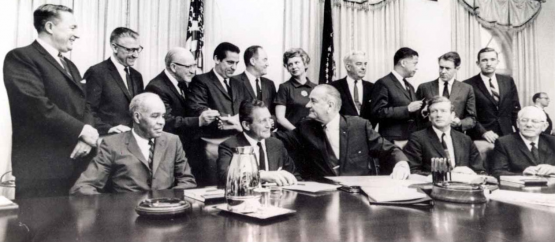As African American communities across the United States suffered from racism, police brutality and housing, education, employment, and political discrimination, revolts, rebellion and riots exploded in the mid 1960's including 1966 Chicago West Side Riot, the Watts Rebellion in August 1965, and the Newark Riot in July 1967. In August 1967, the Detroit Race Riot was one most violent urban revolts in the 20th century. It lasted fife days and resulted in 43 deaths, a thousand injured and over seven thousand arrests as well as forty million dollars worth of property damage.
A National Advisory Commission on Civil Disorders, the Kerner Commission, was established and its finding were made public on March 2, 1968. The following day, Harry Reasoner presented the findings and recommendations of the commission in a special entitled "Remedy for Riot." About a year later, "What Happened to the Riot Report" went back to the topic. Anchored by Harry Reasoner with Roger Mudd, Dan Rather, and Ike Pappas as reporters, the CBS News special found encouraging response at the local level, but discouragingly limited action at higher levels of government. As Reasoner noted in this April 2, 1968, special, the commission’s work resulted in nothing less than the “transformation of a society.” The vice chairman of the commission, Mayor John Lindsay of New York, expressed his disappointment at the federal government’s failure to implement the report and the head of the commission, Governor Otto Kerner of Illinois, agreed with Lindsay about the lack of action in Congress, saying there was “no movement at all—pro or con.” The report contained implicit criticism of both Congress and the White House, while the Senate seemed to be moving. A priest and a sociologist both noted that white communities are a key to the acceptance, with the former being afraid if what might happen if the communities failed to react. As White House Correspondent, Dan Rather analyzed the effect the administration’s new “austerity” were supposed to have considering that six million jobs and two million homes were to be provided with federal funds. An African American man in Newark, N.J., for example, was convinced that the report did not change anything: “it’s the riot that changed everything.” While he had taken part in the previous riot, he did not this time because by then he had found a steady job.


